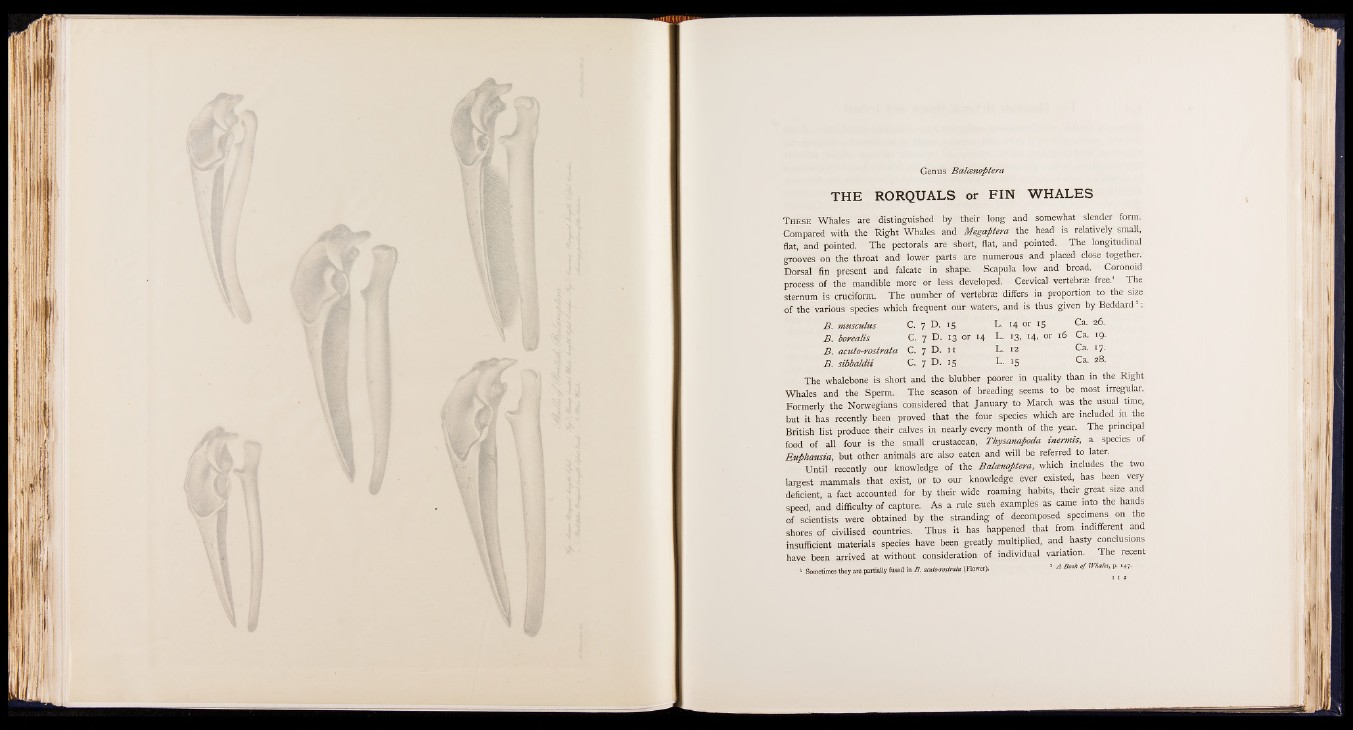
Genus Balcenoptera
T H E R O R Q U A L S or F IN W H A L E S
T hese Whales are distinguished by their long and somewhat slender 'form.
Compared with the Right Whales and Megaptera the head is relatively sm aW
flat, and pointed. The pectorals are short, flat, and pointed. The longitudinal
grooves on the throat and lower parts are numerous and placed close together.
Dorsal fin present and falcate in shape. Scapula low and broad. Coronoid
process of the mandible more or less developed. Cervical vertebrae free.1 The
sternum is cruciform. The number of vertebrae differs in proportion - to the#£l.
of the various species which frequent our waters, and is thus given by Beddard! :
B . musculus C. ^ D. 15 L. 14 or 15 Ca. 26.
B . borealis C. 7 D. 13 or 14 L. 13, 14, or 16 Ca. 19.
B . acuto-roslrata C. 7 D. 11 L. 12 Ca. 17.
B . sibbaldii C. 7 D. 15 L- jp!..1' Ca. 28.
The whalebone is short and the blubber poorer in quality than in the Right
Whales and the Sperm. The season of breeding seems to be most irregular.
Formerly the Norwegians considered that January to March was the usual time,
but it has recently been proved that the four species which are included in the
British list produce their calves in nearly every month of the year. The principal
food of all four is the small crustacean, Thysanapoda inermis, a species of
Euphansia, but other animals are also eaten and will. b|; referred to later.
Until recently our knowledge of the Balimoptera, which includes the two
largest mammals that exist, or to our knowledge ever existed, has been very
deficient, a fact accounted for by their wide roaming habits, their great size and
speed, and difficulty of capture. As a rule such examples as came into the hands
of scientists were obtained by the stranding of decomposed specimens on the
shores of civilised countries. Thus it has happened that from indifferent and
insufficient materials species have been greatly multiplied, and hasty conclusions
have been arrived at without consideration of individual variation. The recent
1 Sometimes they are partially fused in B . acuto-rostrata (Flower). A Book o f Wha , p 47